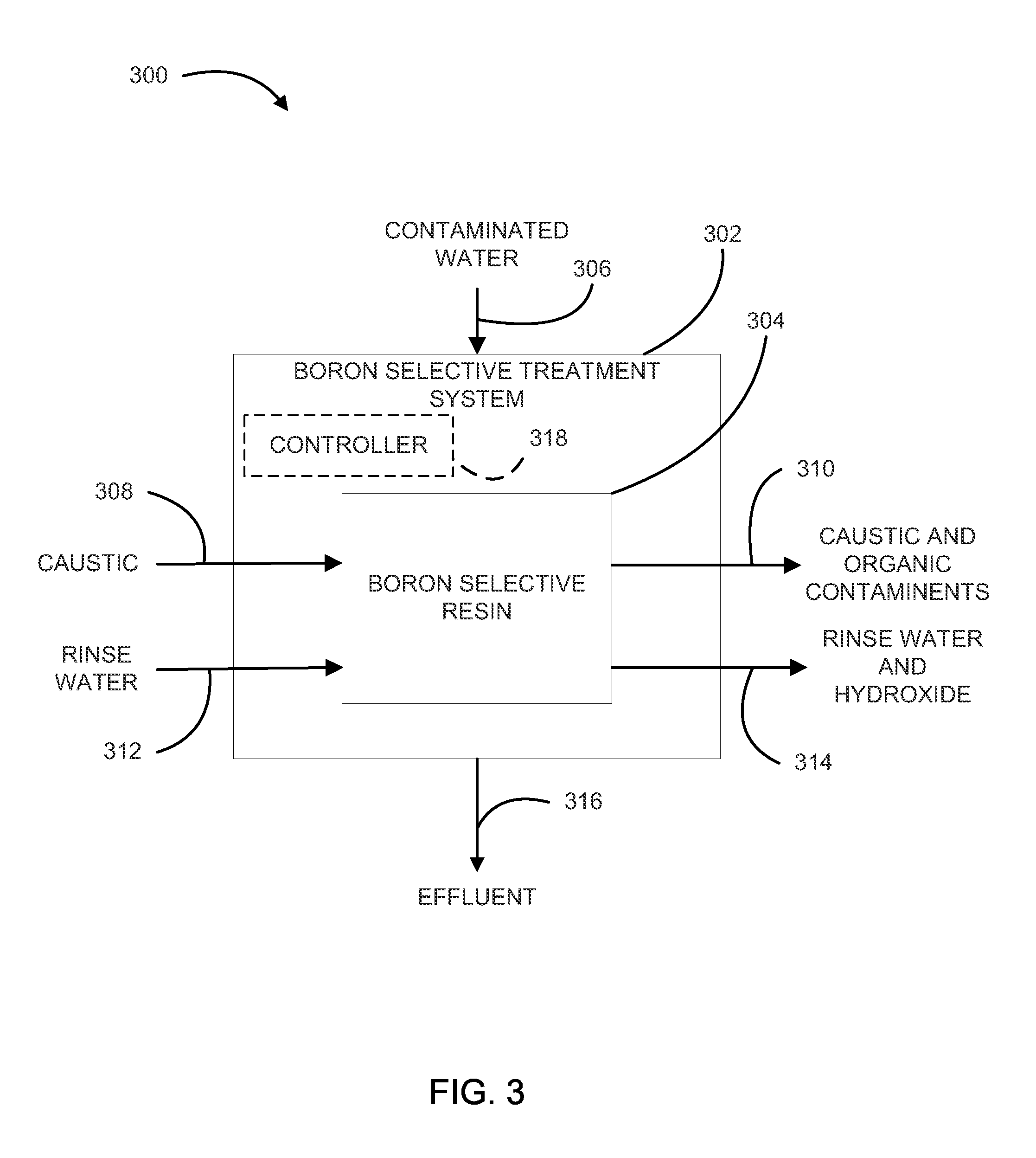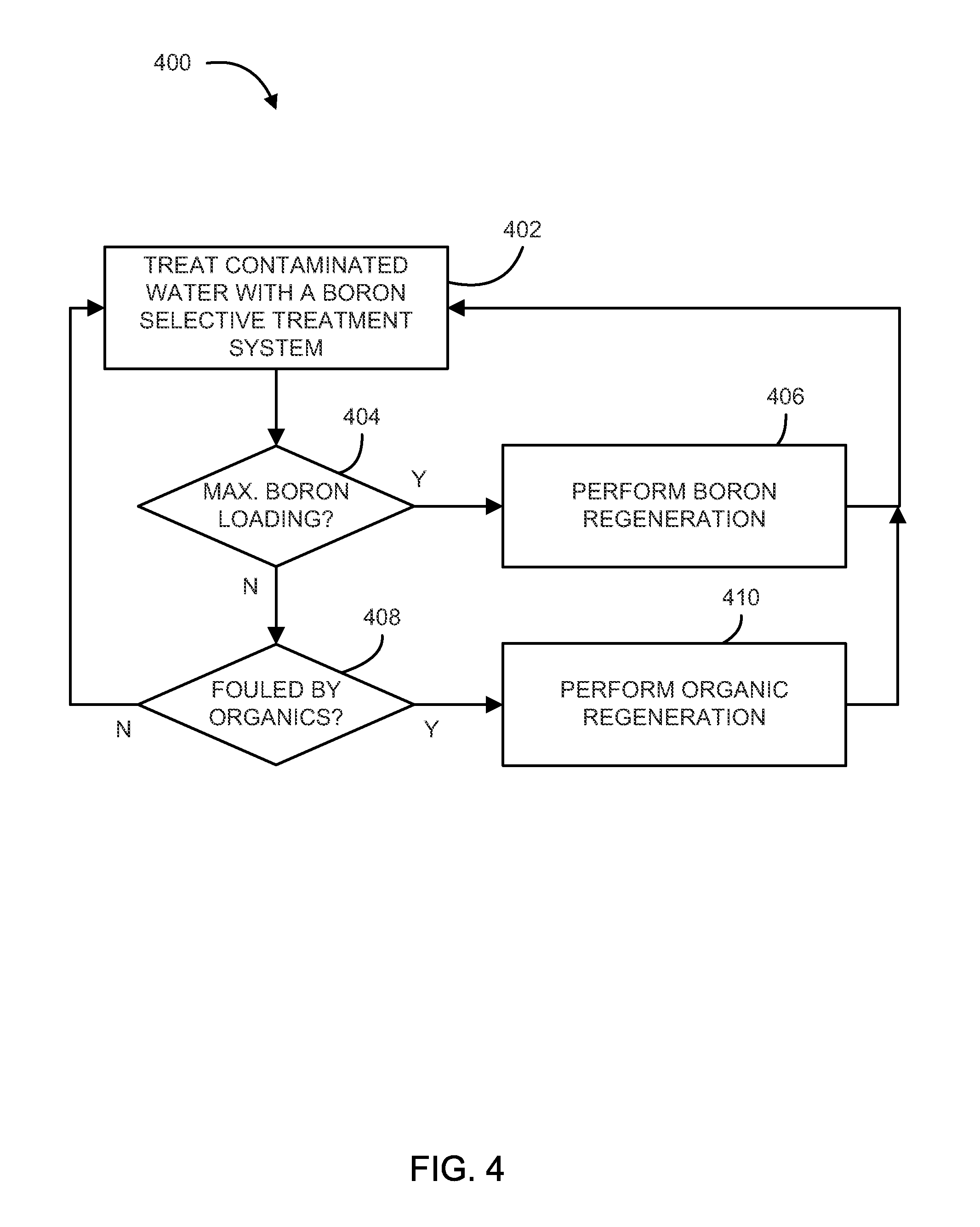Method for removing organic contaminants from resins
a technology of organic contaminants and resins, applied in the direction of filtration separation, combustible gas purification/modification, separation processes, etc., can solve the problem that produced water is typically contaminated
- Summary
- Abstract
- Description
- Claims
- Application Information
AI Technical Summary
Benefits of technology
Problems solved by technology
Method used
Image
Examples
examples
[0084]In an embodiment, contaminated water was passed through columns containing boron-selective resins. After the feeding of an amount of contaminated water, organic leakage from the boron resin was detectable prior to fully loading the resin with boron. The boron-selective resins were washed with different concentrations of caustic instead of being put through a full regeneration process to determine if the boron removal efficiency could be improved. FIGS. 6-9 illustrate graphs of the amount of organic contaminants (i.e. organic carbon) removed by the caustic wash. Further, the experiments showed that an amount of organic carbon is adsorbed by the boron-selective resin and can be removed from the boron-selective resin by utilizing a caustic wash.
[0085]The graphs illustrated in FIGS. 6-9 show the amount of organic contaminants found in the caustic and rinse water as an amount of total organic carbon (TOC) found in the caustic and rinse water after washing the boron-selective resin ...
PUM
| Property | Measurement | Unit |
|---|---|---|
| concentration | aaaaa | aaaaa |
| concentrations | aaaaa | aaaaa |
| concentration | aaaaa | aaaaa |
Abstract
Description
Claims
Application Information
 Login to View More
Login to View More - R&D
- Intellectual Property
- Life Sciences
- Materials
- Tech Scout
- Unparalleled Data Quality
- Higher Quality Content
- 60% Fewer Hallucinations
Browse by: Latest US Patents, China's latest patents, Technical Efficacy Thesaurus, Application Domain, Technology Topic, Popular Technical Reports.
© 2025 PatSnap. All rights reserved.Legal|Privacy policy|Modern Slavery Act Transparency Statement|Sitemap|About US| Contact US: help@patsnap.com



